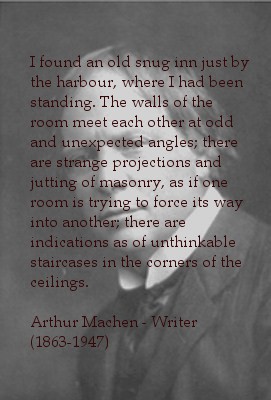At the time of the Domesday Book the village of Hinderwell near Whitby was known as Hildrewell, clearly invoking the name of St. Hilda, Abbess of Whitby Abbey (c. 614 -680). Since then the name has been variously spelled as Ildrewell and in the twelfth century Hilderwell and Hylderwell.
It is said that a well sprung up beside the saint as she prayed for water, but it is more likely that Hinderwell was one of her retreats chosen because of the clear, fresh water springing from the ground there. It may even have been a minor place of pilgrimage as Hope (1893) suggests that the monks would stop here on their journeys from Kirkham to Whitby, which would have meant them taking a rather long way round. The water is said to have healing properties, especially beneficial for eye complaints apparently.
The well can be found in the churchyard of St Hilda's down a slope furnished with stone steps set into the grassy bank. There is also a magnificent yew tree close by and many interesting graves of ship owners and local families, although a good proportion of the stones have been rendered illegible by weathering.

The pump shown in the photograph above was installed before 1900. In 1912 it was dismantled and the well was restored by Hilda Gertrude Montgomery Palmer (1884 - 1946) of Grinkle Park. It is now a sandstone structure approximately a metre and a half in height with the crystal clear water flowing from a chamber behind through a small inlet and into a stone font. A plaque commemorates the restoration.
Key to people in the photograph:
1. Mrs Lizzie Hodgson at the pump
2. Another unrelated Mrs Lizzie Hodgson
3. Mr John Gray carrying two pails on a yoke
4. Mrs Hannah Trattles of Gate House
5. Bob Billam
6. Joe Dawson
7. Annie Lyth
8. Mabel Wheatherill
The key to the people in the photograph of the old pump is from Round and About The North Yorkshire Moors Vol II by Tom Scott Burns and Martin Rigg











